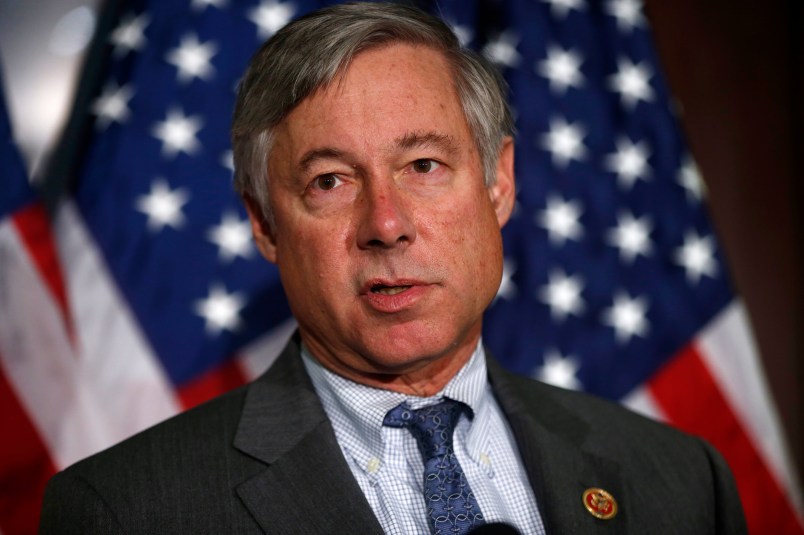The evidence of Republicans playing fast and loose with the facts to discredit Obamacare is everywhere and has been for months. But I’m not sure there’s any one example that so neatly encapsulates the bad faith and unfair dealing as what happened last night.
One of the ways Republicans been trying to ding the Obamacare enrollment numbers is to raise the possibility that no where near the total number of enrollees are actually paying premiums. And they’ve been able to make that argument mostly in a vacuum because there’s an absence of good real-time data on this point. (The reasons for a lack of real-time data are basically legit and not worth going into here.)
So Republicans on the House Energy and Commerce, chaired by Rep. Fred Upton (R-MI) (pictured), decided to take things a step further. They went directly to the insurance companies and got from them the numbers on who has paid. The percentage the Republican report arrived at was 67 percent of those who bought insurance via the federal exchange. That’s quite a bit less than the 80-90 percent HHS Secretary Kathleen Sebelius has been estimating. And so the committee touted the new lower number with the title: “Committee Learns Who’s Paid for Obamacare: As of April 15, Only 67 Percent of Enrollees in Federal Marketplace Had Paid First Month’s Premium.”
But, as Dylan Scott explains, there’s a huge catch which makes that figure useless.
Committee Republicans only reported premium payments made through April 15. But a big chunk of the enrollees — those who enrolled after March 15 — had until April 30 to make their first premium payments. How big a chunk? Huge.
Here’s how we know that: HHS announced on March 17 that they had hit the 5 million sign-ups mark. So of the 8 million to eventually enroll nationwide, more than 3 million signed up after March 15. Now, that includes the 14 state-based exchanges, so it doesn’t line up exactly with the federal-exchange-only numbers the committee was reporting, but you get the idea.
All of those people had until April 30 to pay their first premium, and no real incentive to pay that premium early.
The math is pretty simple. You take the total number of people who have paid their Obamacare premiums and you divide it by the total number of people who enrolled in Obamacare. Multiply that times 100 and you get the percentage of enrollees who have actually paid their premiums.
This isn’t rocket science.
But the GOP count doesn’t and in fact cannot yet account for everyone who paid their premiums between April 15 and April 30. But they do count everyone who enrolled. So a flawed partial numerator over the full and complete denominator is bound to yield a lower percentage.
Meanwhile, as Dylan reports, the insurance companies themselves are seeing a roughly 85-90 percent rate of payment of premiums.
The GOP’s 67 percent figure is so ridiculously flawed that no one in good faith would ever consider releasing such a number publicly. It is on its face incomplete and by definition misleading.
As Jonathan Cohn writes: “You shouldn’t take it seriously.”






